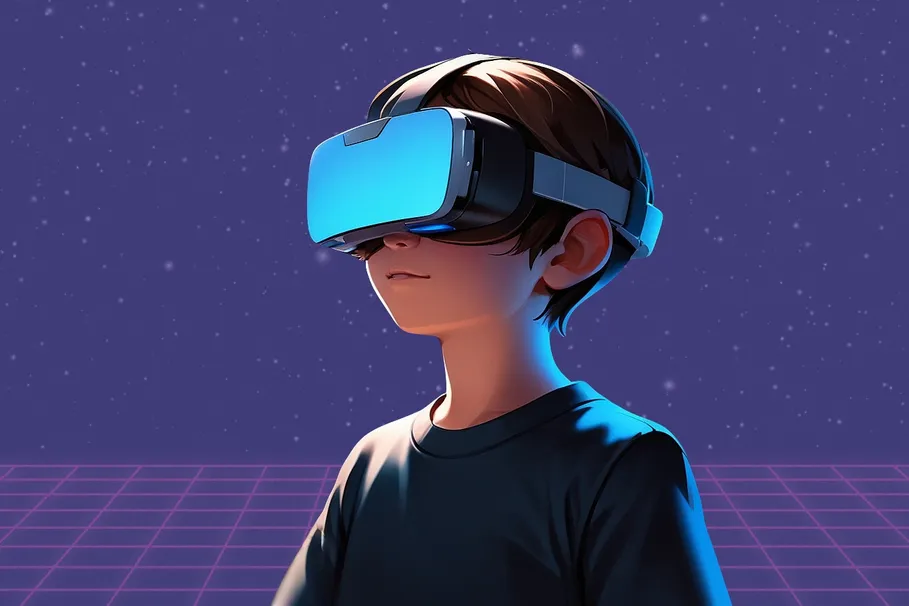The concept of the metaverse represents a fusion of physical and virtual realities, a digital universe powered by advanced technologies such as Virtual Reality (VR), Augmented Reality (AR), and Mixed Reality (MR). This virtual realm is not merely an extension of the internet but a new dimension where the boundaries between the physical and digital worlds blur, enabling unprecedented levels of interaction, creativity, and commerce.
The Hype and Decline
The initial excitement surrounding the metaverse was fueled by significant investments and high-profile endorsements. Facebook’s rebranding to Meta in 2021 marked a pivotal moment, signaling a major commitment to developing this new digital frontier. Industry leaders like Bill Gates predicted that within a few years, most virtual meetings would move to the metaverse. This vision spurred investments and sparked widespread interest, leading to a surge in metaverse-related projects and startups.
However, this hype soon faced a reality check. Despite the grand visions, the practical implementation of the metaverse encountered several hurdles. Technical limitations, high development costs, and slow consumer adoption led to substantial financial losses for companies heavily invested in the metaverse. Meta, for instance, reported significant financial setbacks, and consumer interest began to wane, leading to skepticism about the feasibility of the metaverse.
Why Metaverse Technology Remains Crucial
Despite the decline in hype, the underlying technologies that power the metaverse remain crucial for various industries. Advancements in graphics, artificial intelligence (AI), and other related fields continue to push the boundaries of what is possible in virtual and augmented realities. These technologies have significant applications beyond entertainment, including:
- E-commerce: Virtual showrooms and interactive product demonstrations provide a more immersive shopping experience.
- Industrial Design: VR and AR enable designers to create and test prototypes in a virtual space, reducing costs and speeding up the development process.
- Healthcare: VR-based training programs and AR-assisted surgeries are transforming medical practices.
- Education and Training: Immersive learning environments make education more engaging and effective.
Understanding the Metaverse’s Functionality
To grasp the metaverse’s potential, it’s essential to understand its structure and functionality. The metaverse is envisioned as an interconnected network of virtual spaces, each offering unique experiences and interactions. Key components include:
- Interoperability: Seamless interaction between different virtual worlds and platforms is crucial for a unified metaverse.
- User Interfaces: VR headsets, AR glasses, and other devices enable users to access and interact with the metaverse.
- Technological Integration: AI, IoT, and blockchain technologies play vital roles in creating a functional and secure metaverse environment.
These elements work together to create a cohesive and immersive experience, where users can seamlessly transition between various virtual spaces and activities.
The Future of the Metaverse
The future of the metaverse is filled with possibilities, ranging from niche applications to a fully realized dynamic open space. Several scenarios could unfold:
- Niche Applications: The metaverse may develop specific use cases, such as gaming, virtual meetings, and education, without becoming a ubiquitous platform.
- Gradual Integration: As technology advances, the metaverse could gradually integrate into our daily lives, enhancing various aspects of work and leisure.
- Dynamic Open Space: In the most optimistic scenario, the metaverse becomes a vast, interconnected digital universe where users can freely interact, create, and explore.
Currently, various metaverse-like experiences are emerging, such as virtual concerts, digital real estate, and immersive social platforms, indicating a gradual but steady growth.
Corporate Involvement
Major corporations are actively contributing to the development of the metaverse, each playing a unique role:
- Meta (formerly Facebook): Investing heavily in VR and AR technologies, aiming to build a comprehensive metaverse platform.
- Microsoft: Developing enterprise solutions for virtual collaboration and remote work through its Mesh platform.
- NVIDIA: Providing advanced graphics processing units (GPUs) and AI tools essential for creating realistic virtual environments.
- Epic Games: Creator of Fortnite, exploring the metaverse through interactive gaming experiences and virtual events.
These companies, among others, are driving the technological advancements and creating the infrastructure necessary for the metaverse to thrive.
Conclusion
The future of the metaverse is a subject of both skepticism and optimism. While the initial hype has subsided, the technologies underpinning the metaverse continue to evolve and find practical applications across various industries. Businesses must stay informed and adaptable, exploring new opportunities while being mindful of the ethical and societal implications.
As we move forward, the metaverse’s development will likely be gradual, marked by incremental advancements and increasing integration into our daily lives. By balancing innovation with responsibility, we can harness the potential of the metaverse to create a more connected, immersive, and equitable digital future.


